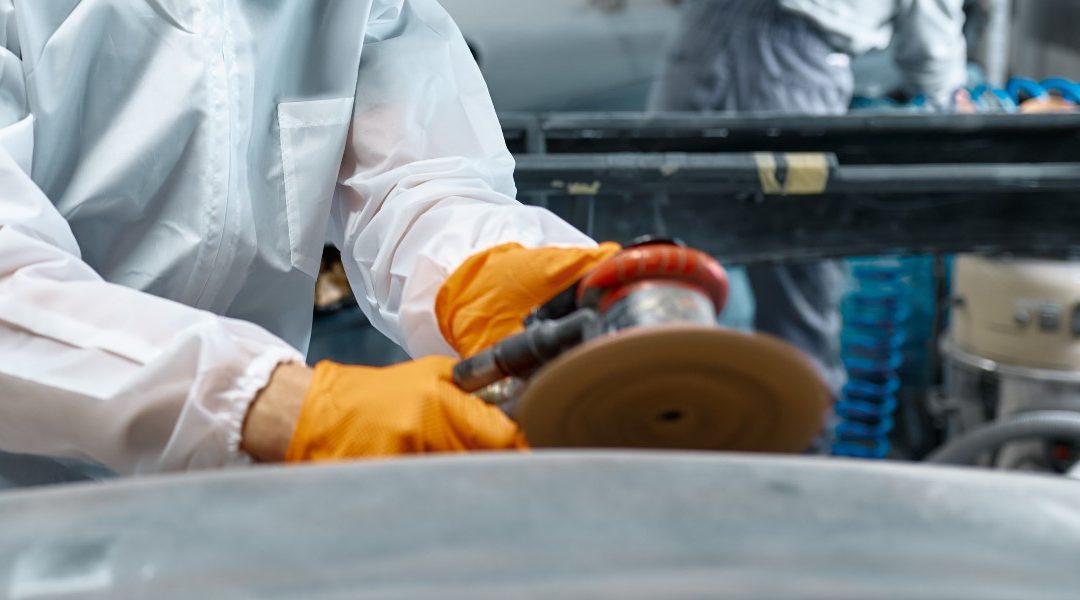When restoring an old vehicle in Tucson, AZ, you may notice a large amount of corrosion on the car body, most likely caused by environmental damage or age. Removing old paint, rust, grease, and oil is crucial in the restoration process. Resurfacing the car body helps new paint jobs adhere evenly and produce a glossy finish.
There are several popular methods to remove corrosion from the car body, the most common being sandblasting. This article explains the sandblasting process and the equipment involved.
When asking, “can you sandblast a car?” be mindful that there is a large margin for error. If you don’t have training and experience working with abrasive substances, it is wise to leave the sandblasting to the auto painting professionals in Tucson, AZ.
What Is Sandblasting?
Sandblasting is an umbrella term to describe the scrubbing of the corrosive residue using a rough, abrasive material. It is the process that has replaced the old-fashioned method of using sandpaper to remove paint or rust.
The sandblasting process uses compressed air or water to propel small particles of an abrasive substance against the vehicle’s surface. This method utilizes any number of abrasive substances, the most common include:
- Sand particles
- Crushed plastic
- Steel grit
- Crushed glass
- Copper slug
- Aluminum oxide
Is Sandblasting Safe?
The blasting machine utilizes pneumatic propulsion or air pressure to expel abrasive materials that remove paint, rust, grease, and oil from the outer surface of the car body, providing a clean, even surface to repaint. Blast machines are powerful but effective for surface profiling.
The force of professional-grade blasting machines and the potency of the abrasive element means that any sandblasting project must be carried out with the utmost care. If not, sandblasting can degrade the surface of the car. In some instances, machine stripping or acid dipping may be a safer surfacing option. If you are unsure, it is better to leave the task to a professional.
Can You Sandblast a Car – Do You Have the Proper Safety Equipment?
Personal protective equipment is paramount when operating blast equipment, shielding you from the abrasive particles that could ricochet and hit you at hazardous speeds, causing cuts, burns, and eye damage.
You should have the following protective gear before you start blasting your car:
- Dust mask/respirator
- Blast suit
- Safety helmet
- Goggles
- Professional grade gloves
Protect and Cover Parts of the Vehicle
Cars have delicate parts such as headlamps, tail lamps, windows, side mirrors, and door handles. Such components cannot withstand the pressure of the blaster or the material used and must be covered with thick padding to prevent damage.
Trust the Auto Painting Professionals at Cutting Edge
You may still be wondering, “can you sandblast a car?” Perhaps you can, but should you? Sandblasting requires industrial-grade equipment and professional protective gear. If you accidentally blemish the car surface, you will end up needing to hire a technician to repair the damage.
Why not hire the pros at Cutting Edge Collision Center to sandblast your car instead? Check out our blog to learn about the important questions to ask before automotive paint services.
Call Cutting Edge Collision Center at (520) 339-6901 for a free estimate.

